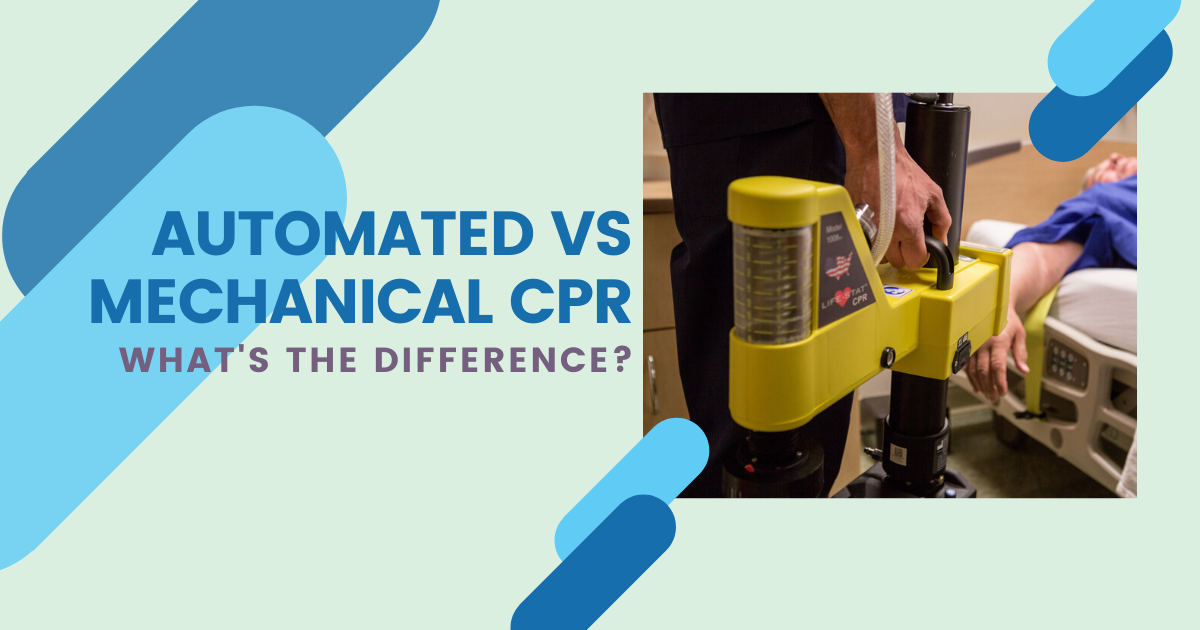Automated or Mechanical CPR, What’s the difference?
CPR is used to restore the flow of oxygenated blood to the brain and heart. While many think CPR is about the heart, it’s really about moving the blood to the brain and other vital organs.
Most know that manual CPR is not the only option, and that manual CPR is very difficult to provide consistently for long period of time. Even 2 to 3 minutes of CPR is exhausting to the provider. These days, more and more medical providers are turning to mechanical CPR. So, what exactly does the term mechanical CPR mean? Keep reading to find out.
Mechanical CPR Devices Deliver Automated Compressions
The goal of mechanical CPR devices is to provide an automated way to deliver quality CPR during a cardiac arrest. Compared to manual CPR, mechanical CPR allows for consistent, uninterrupted compressions that can increase the effectiveness of the procedure. Mechanical CPR can also eliminate human errors, which are common during manual CPR.
These devices offer an automated way to provide consistent CPR, potentially increasing the chances of a patient’s survival from a cardiac arrest, especially when prolonged CPR is necessary. There are many articles touting mechanical CPR devices as a viable alternative to quality manual chest compressions. And we agree! This is particularly the case in situations when manual chest compressions aren’t practical or compromise the safety of the provider.
Mechanical CPR, now Automated CPR Devices
The first mechanical CPR device made its debut in 1961. For decades the comparison was manual vs mechanical, so that lead the description of these devices. However, it wasn’t until recently that these devices have become more accepted, and recognized for what they do – delivering automated compressions so that healthcare providers can treat the cause of the heart stoppage. As mechanical CPR devices have been used more frequently by medical professionals, they have become known as Automated CPR devices.
Not all Automated CPR Devices are Equal
Several devices are available on the market today. They range in cost to purchase, maintenance costs or accessories used for each patient, and certainly in capabilities. Our Thumper and Life-Stat CPR devices have slight differences in the options of ventilation (Life-Stat) or not (Thumper), as well as CPM options.
We work with many EMS providers and healthcare professionals who use our automated CPR devices every day. We have many stories where our devices were used on patients for anywhere from 45 minutes to several hours and allowed for complete resuscitation and a good neurological outcome.
Whether these devices are described as Mechanical CPR Machines from the past several decades or Automated CPR Devices describing what they do, more than what they are, the ultimate desired outcome is the same – give patients a better chance for survival.
Contact Michigan Instruments for More Information
Interested in learning more about how our Life-Stat and Thumper CPR devices compare to others on the market? Request a quote or contact us today. You’ll see how you can provide Automated CPR with a much lower cost.




